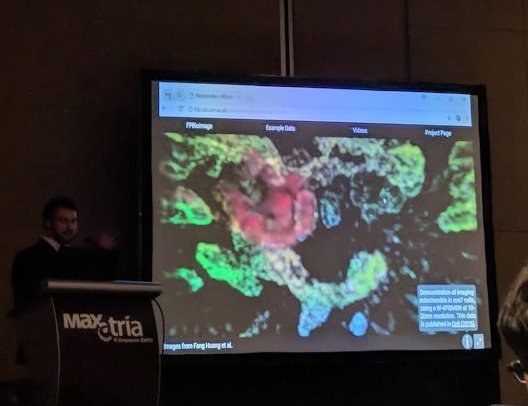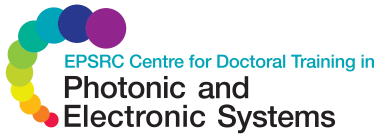
More Nature Papers for PhD student working on 3D data sharing software for microscopy
Marcus Fantham, a PhD student at Cambridge presented his 3D data sharing software tool, published in Nature Photonics last year, at a major conference in Germany and Singapore to the microscopy academic community. He now also has 2 recent Nature Communications papers!
Marcus Fantham, a PhD student in the CDT, supervised by Professor Clemens Kaminski at the University of Cambridge is pioneering image analysis and visualisation of 3D microscopy data. He said:
"My software tool FPBioimage, published in Nature Photonics last year, continues to grow in popularity as I add more features to it. The latest of these is a plugin for a popular image analysis program, ImageJ, which allows researchers to upload their 3D data for sharing or publishing with just one click. To announce this development to the microscopy community, I gave talks both at the International Conference On Nanoscopy (ICON 2018) in Bielefeld, and at Focus On Microscopy (FOM 2018) in Singapore."
Marcus was recently an author on two Nature Communications papers with contributions related to his software development. The first of these was led by the Molecular Neuroscience Group, investigating the interaction of calcium and alpha-synuclein, a protein which causes Parkinson's Disease when it aggregates in brain cells. Marcus wrote several image analysis plugins for the project, and you can read the paper at:
Lautenschläger, Janin, Amberley D. Stephens, Giuliana Fusco, Florian Ströhl, Nathan Curry, Maria Zacharopoulou, Claire H. Michel, Romain Laine, Nadezhda Nespovitaya, Marcus Fantham, et al. "C-terminal calcium binding of α-synuclein modulates synaptic vesicle interaction." Nature communications 9, no. 1 (2018): 712. http://doi.org/10.1038/s41467-018-03111-4 .
Marcus has now had a second paper, accepted and due for publication in Nature Communications, led by the Adsorption and Advanced Materials Group. The paper presents a Metal Organic Framework (MOF) which increases the volume of oxygen which can be stored in an oxygen storage tank. About this research paper, Marcus said:
"To find the ideal MOF, we had to analyse a database of over 3000 MOFs with 40 parameters for each entry. To address this big data problem, I wrote a web-based graphing tool which is able to present up to 6 dimensions at once, utilising spatial dimensions, time, colour and size. This tool is presented alongside the paper, and can now be used by the MOF community for the discovery of MOFs for other applications."
You can read this paper at:
Moghadam, Peyman Z., Timur Islamoglu, Timur Islamoglu, Jason Exley, Marcus Fantham, Clemens F. Kaminski, Randall Q. Snurr, Omar K. Farha, David Fairen-Jimenez, "Computer-aided discovery of a metal-organic framework with superior oxygen uptake." Nature communications 9, no. 2 (2018)
Many congratulations Marcus on a great start to your academic career!
